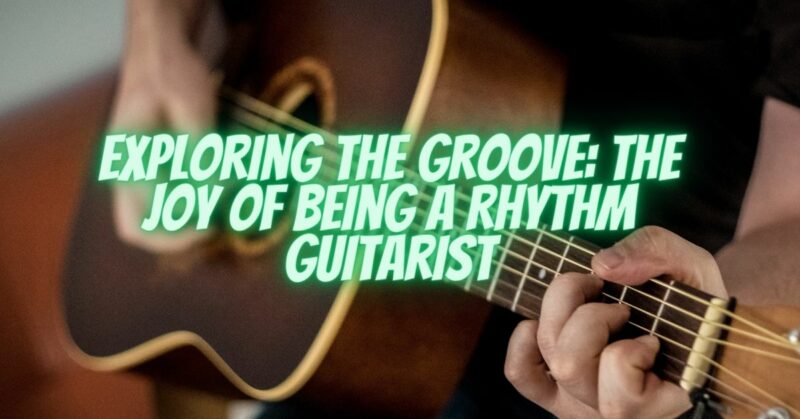The age-old debate between rhythm guitarists and lead guitarists has fueled countless discussions among musicians and music enthusiasts. Both roles are integral to the sound of a band or musical ensemble, each offering its unique set of challenges and rewards. While the concept of “fun” is subjective and varies from person to person, being a rhythm guitarist brings its own distinct pleasures and joys that can make it an incredibly rewarding musical journey.
The Heartbeat of the Band
Rhythm guitarists lay the foundation for the entire musical piece. They provide the groove, the pulse, and the driving force that keeps the song moving forward. Being responsible for the chord progressions, strumming patterns, and overall rhythmic structure, rhythm guitarists are the ones who ensure that the band remains tightly locked together. The satisfaction of knowing you’re at the core of the music’s heartbeat can be immensely gratifying.
The Power of Groove
Rhythm guitarists get to revel in the power of groove. It’s about finding the perfect pocket within the song, where your chords align with the bass and drums to create a seamless, irresistible rhythm. This groove has the ability to make people tap their feet, nod their heads, and even get up and dance. When the audience responds to your groove, the sense of accomplishment is truly special.
Collaborative Experience
While lead guitarists often take the spotlight during solos, rhythm guitarists thrive on collaboration. They work closely with the drummer, bassist, and other instrumentalists to create a unified sound. This teamwork can lead to strong musical bonds and a sense of camaraderie within the band. Being part of a musical team and contributing to the overall sound can be deeply satisfying.
Shaping the Song’s Dynamics
Rhythm guitarists are responsible for shaping the dynamics of a song. By altering strumming intensity, using techniques like palm muting, and incorporating dynamics in chord progressions, they can take the song from soft and delicate to loud and powerful. This control over the song’s emotional journey is a unique and fulfilling aspect of being a rhythm guitarist.
Creating Unique Arrangements
In many cases, rhythm guitarists are given the freedom to create unique chord voicings and arrangements. This creativity allows them to put their personal stamp on the song, contributing to its distinct character. Experimenting with alternative chord shapes and inversions can add depth and richness to the music.
Enhancing Your Musical Ear
Playing rhythm guitar requires a keen ear for harmony and timing. You need to be able to listen closely to the other instruments and adjust your playing accordingly. This process of active listening and adaptability can significantly improve your musical ear, making you a more well-rounded musician.
Less Pressure, More Enjoyment
While lead guitarists often carry the weight of delivering memorable solos, rhythm guitarists can enjoy a bit less pressure in that regard. This can lead to a more relaxed and enjoyable playing experience, allowing you to focus on the joy of creating music rather than the spotlight.
Conclusion: The Groove Factor
In the end, the question of whether it’s more fun to be a rhythm guitarist than a lead guitarist depends on personal preferences and musical aspirations. Rhythm guitarists find their fun in the groove, the collaboration, and the satisfaction of being the backbone of the music. The magic of playing chords that resonate with the rhythm section and engage the audience can create a sense of fulfillment that’s uniquely their own. So, if you’re drawn to creating the irresistible pulse that makes people move, the role of a rhythm guitarist might just be your ticket to musical enjoyment and satisfaction.


